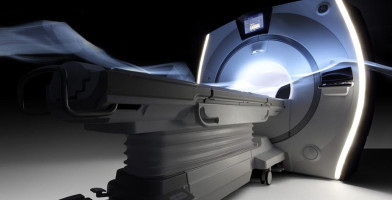
A new technique for imaging of microbubble ultrasound contrast agents may be useful in detection of prostate cancer not found by multi-parametric magnetic resonance imaging (MRI), according to a study to be presented at the ARRS 2019 Annual Meeting, set for May 5-10 in Honolulu, HI.
The first in vivo application of contrast-enhanced SHI in the prostate, the pilot study was conducted to evaluate contrast-enhanced subharmonic imaging (SHI) of the prostate for detection of prostate cancer.
Building on the authors' previous work demonstrating the effectiveness of contrast enhanced harmonic imaging (HI) for detection of prostate cancer, 55 patients referred for prostate biopsy were imaged using conventional grayscale, colour, and power Doppler, conventional contrast HI, SHI - a new technique for imaging of microbubble ultrasound contrast agents with up to a 10-fold increase in contrast-to-background signal ratio relative to conventional HI and flash replenishment in combination with SHI (MIP-SHI).
The results demonstrated contrast-enhanced SHI enhancement in all patients.
Detection of prostate cancer using contrast-enhanced SHI included 9 of 31 patients with a prior negative MRI or negative MRI-guided biopsy, suggesting SHI may be useful in detection of prostate cancer not found by multi-parametric MRI.
"Diagnosis of clinically significant prostate cancer with non-invasive means is a real clinical challenge," said author of the study Ethan Halpern, MD. " Although multi-parametric MRI is currently used for this purpose, ultrasound has numerous advantages. Ultrasound systems are portable. Ultrasound studies are far less expensive and more widely available as compared with MRI. Contrast enhanced ultrasound studies can be performed at the same sitting as the ultrasound-guided biopsy, while mp-MRI requires two visits, one for the diagnostic MR study and a second for the fusion biopsy."
"There is no need for a fusion imaging system (additional hardware/software) when using contrast enhanced ultrasound. No additional effort is required to properly register the contrast-enhanced ultrasound diagnostic study with the targeting system for biopsy. Combining contrast enhanced ultrasound with subharmonic imaging has the potential to provide a new, non-invasive method for diagnosis and characterisation of prostate cancer," Halpern added.
Source: American Roentgen Ray Society